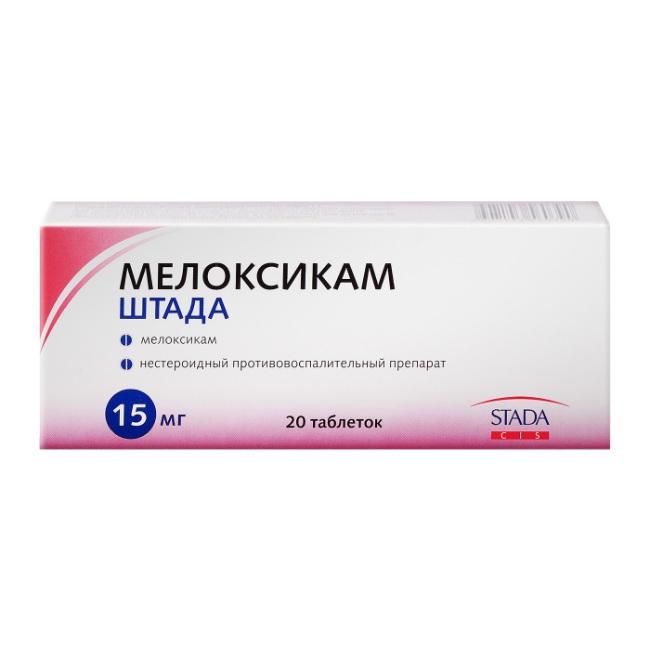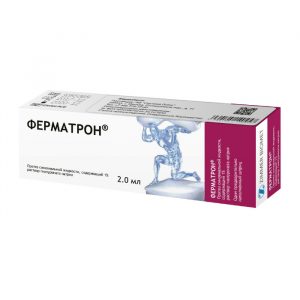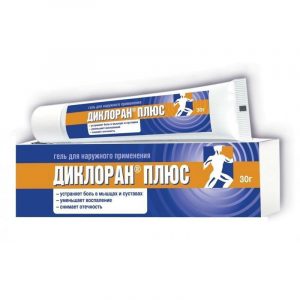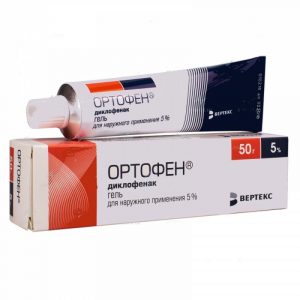Description
Release form
Tablets.
packaging 20 pcs
Pharmacological action
Meloxicam has anti-inflammatory, analgesic, antipyretic effects.
Indications
osteoarthritis rheumatoid arthritis ankylosing spondylitis (ankylosing spondylitis) inflammatory and degenerative joint diseases, accompanied by pain
Contraindications
Hypersensitivity to meloxicam and / or to any of the components of the drug, a combination of bronchial asthma and recurrent polyposis of the nose and paranasal sinuses, intolerance to acetylsalicylic acid and pyrazolone preparations, gastric and duodenal ulcer in the exacerbation phase, active gastrointestinal bleeding, other bleeding severe liver failure and active liver disease severe renal failure (if hemodialysis and creatinine clearance less than 30 ml / min are not performed) progressive kidney disease, hyperkalemia, severe heart failure, condition after coronary artery bypass grafting, pregnancy, lactation (chest ie feeding) for children up to age 12 years, lactase deficiency, galactosemia, glucose-galactose malabsorption syndrome. Precautions: Over 65 years old, coronary heart disease, chronic heart failure, cerebrovascular disease, dyslipidemia, hyperlipidemia, diabetes mellitus, peripheral arterial diseases, smoking, creatinine clearance less than 60 ml / min, a history of gastrointestinal ulceration, the presence of Helicobacter pulori infection, prolonged use of NSAIDs, alcoholism, severe somatic diseases, concomitant use of oral glucocorticosteroid drugs (anticoagulants (including warfarin) , antiplatelet agents (including clopidogrel), selective serotonin reuptake inhibitors (including citalopram, fluoxetine, paroxetine, sertraline), angiotensin converting enzyme (ACE) inhibitors and re antagonists eptorov angiotensin II.
Use during pregnancy and lactation
Meloxicam is contraindicated in children under the age of 15 years, during pregnancy and lactation.
Special instructions
Meloxicam is intended for symptomatic therapy, it should not be taken to prevent exacerbation of diseases. Caution should be exercised in the treatment of patients with a history of gastrointestinal diseases and in patients receiving anticoagulants. Patients with gastrointestinal symptoms should be observed regularly. Periodic monitoring of blood coagulation parameters is required. If ulcerative lesions of the gastrointestinal tract or gastrointestinal bleeding occur, meloxicam should be canceled. If during the treatment process allergic reactions (itching, urticaria, skin rash, photosensitivity) occur, you should consult a doctor in order to resolve the issue of stopping the drug. The use of NSAIDs in patients with reduced renal blood flow or a reduced volume of circulating blood can lead to decompensation of latent renal failure. After discontinuation of NSAIDs, kidney function is usually restored to its original level. The highest risk of developing this reaction is in elderly patients who have dehydration, patients with congestive heart failure, liver cirrhosis, nephrotic syndrome or kidney disease, patients receiving diuretics, ACE inhibitors, angiotensin II receptor antagonists and patients who have undergone serious surgical interventions leading to hypovolemia. In such patients, at the beginning of therapy, diuresis and renal function should be carefully monitored. Increased activity of transaminases, as a rule, is transient and insignificant. With a significant and persistent increase in the activity of transaminases, meloxicam should be discontinued and liver function should be monitored. Weakened or emaciated patients may tolerate adverse events worse, therefore, such patients should be carefully monitored. Caution should be exercised in the treatment of elderly patients who are more likely to have impaired renal, hepatic, and cardiac function. The use of NSAIDs together with diuretics can lead to a delay in sodium, potassium and water, and affect the natriuretic effect of diuretics. As a result, in susceptible patients, there may be an increase in signs of heart failure or hypertension. Meloxicam, like other NSAIDs, can mask the symptoms of an infectious disease. The use of meloxicam, as well as other drugs that block the synthesis of prostaglandins, can affect fertility, so the drug is not recommended for women who want to become pregnant. Influence on the ability to drive vehicles and work with mechanisms. There have been no special studies regarding the effect of the drug on the ability to drive vehicles and mechanisms. You should be careful to drive a car and engage in other potentially dangerous activities that require a high speed of psychomotor reactions, due to possible adverse reactions from the central nervous system, such as visual impairment, drowsiness, dizziness.
Composition
1 tablet contains the active substance – meloxicam 7.5 mg and 15.0 mg excipients – microcrystalline cellulose 65.0 mg / 130.0 mg, lactose monohydrate 70.0 mg / 140.0 mg, colloidal silicon dioxide (aerosil) – 1.5 mg / 3.0 mg, croscarmellose sodium (primellose) – 3.0 mg / 6.0 mg, talc 1.5 mg / 3.0 mg, magnesium stearate 1.5 mg / 3, 0 mg
Dosage and administration
Inside, with food, once a day. Rheumatoid arthritis: 15 mg per day. When a positive therapeutic effect is achieved, the dose can be reduced to 7.5 mg per day. Osteoarthrosis: 7.5 mg per day. If necessary, the dose can be increased to 15 mg per day. Ankylosing spondylitis: 15 mg per day. Depending on the therapeutic effect, the dose may be reduced to 7.5 mg per day. The maximum daily dose of meloxicam is 15 mg. In patients with an increased risk of side effects, as well as in patients with severe renal failure undergoing hemodialysis, the maximum daily dose is 7.5 mg. The maximum dose for adolescents is 0.25 mg / kg. With moderate renal and hepatic insufficiency, as well as with clinically stable liver cirrhosis, dose adjustment is not required.
Side effects
From the digestive system: dyspepsia, incl. nausea, vomiting, abdominal pain, diarrhea, constipation, flatulence, belching erosive-ulcerative lesions of the gastrointestinal tract, perforation of the stomach or intestines, gastrointestinal bleeding (latent or overt) transient increase in activity of hepatic transaminitis, hyperbili, , colitis, dry mouth. From the cardiovascular system: peripheral edema, tachyardia, increase or decrease in blood pressure, hot flashes, vasculitis. From the hematopoietic organs: anemia, leukopenia, thrombocytopenia. From the respiratory system: bronchospasm, bronchial asthma with aspirin intolerance (unstable bronchial asthma). From the central nervous system: dizziness, headache, tinnitus, sleep disorders (drowsiness / insomnia), disorientation, emotional lability, confusion, anxiety, depression. From the urinary system: hematuria, albuminuria, increase in creatinine level, acute renal failure. Allergic reactions: anaphylactoid and anaphylactic reactions, itching, skin rash, hives, multiform exudative erythema, Steven-Johnson syndrome, toxic epidermal necrolysis (Lyell’s syndrome), photosensitization. Other: impaired taste, conjunctivitis, visual impairment (fuzziness), weakness, fever. If any of the side effects listed in the instructions get worse, or you notice any other side effects not listed in the instructions, tell your doctor. If you notice any allergic reactions to any drug, such as: rash, itching, difficulty swallowing and breathing, swelling of the larynx and tongue, immediately discontinue treatment and consult a doctor.
Drug Interaction
When used with acetylsalicylic acid and other NSAIDs, the risk of erosive and ulcerative lesions and bleeding from the gastrointestinal tract is increased. When used with antihypertensive agents, the effectiveness of the latter may be reduced. When co-administered with lithium preparations, lithium may accumulate and increase its toxic effect (monitoring of lithium concentration in the blood is recommended). Concomitant use with methotrexate contributes to the enhancement of side effects of the latter on the hematopoietic system (there is a risk of anemia and leukopenia. Periodic monitoring of general blood analysis is required). Co-administration with diuretics and cyclosporine increases the risk of renal failure. When used concurrently with intrauterine contraceptives, the effectiveness of the latter may be reduced. When co-administered with anticoagulants (heparin, ticlopidine, warfarin), as well as with thrombolytic agents (streptokinase, fibrinolysin) increases the risk of bleeding (blood clotting should be monitored periodically). Co-administration with cholestyramine enhances the elimination of meloxicam via the gastrointestinal tract (as a result of meloxicam binding). No pharmacokinetic interaction was detected with meloxicam with antacids.
Overdose
Symptoms: increased side effects.
Treatment: gastric lavage, intake of activated charcoal (within the next hour), symptomatic therapy. Colestyramine accelerates the elimination of the drug from the body. Forced diuresis, alkalization of urine, hemodialysis are ineffective due to the high connection of meloxicam with blood proteins. Specific antidotes and antagonists were not found.
Storage conditions
In a dry, protected from light at a temperature of 15 to 25o C. In a dry, dark place at a temperature not exceeding 25 ° C. Keep out of reach of children.
Expiration
3 years. Do not use after the expiry date stated on the pack.
active substance
Meloxicam




